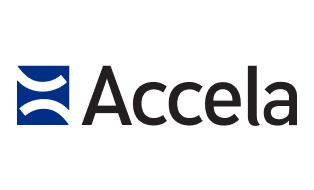This article is the companion to the information Accela and Develop Louisville shared with mayors and council members attending the National League of Cities’ 2022 City Summit Conference. We’ve included all the presentation details here, plus much more.
This project got its start with a simple proposal to bring more visibility to cities’ goals and progress towards affordable housing inventory. We set out to shine the spotlight on the city services and policies responsible for accelerating (or impeding) a city’s housing programs, leveraging the work of Louisville, Kentucky. We were granted exclusive insights into Louisville’s operations through Accela software, the system of record for permitting, licensing, and code enforcement.
Our group expected a quick return and to design a few PowerBI dashboards to help tell the story. Instead, we learned quickly that many cities, like Louisville, already have earnest housing programs with good digital instrumentation highlighting the key performance indicators. We observed and confirmed many examples of excellence.
Cities invest in housing improvement with good reason. According to the National Association of Realtors’ Housing Shortage Tracker, new housing permits (new housing units) fall behind new jobs (new residents) at a rate of 2 to 1. The problem is even more acute in some areas.
25% of renters spend more than half their income on housing. And, beyond those struggling to make rent, there are also hundreds of thousands of people who are without permanent shelter and experience homelessness every night.
The health impacts of the housing gap cannot be overstated. Specifically, those negative health outcomes associated with high housing costs, poor quality, lack of stability, and neighborhood dynamic, all of which affect people of color, low-income and vulnerable populations greatly.
As community leaders, the tools in our toolchest are many and varied. There are so many examples of great viable practices, their effectiveness undisputed. But at the same time, housing remains dynamic. That is why advocates monitor the environment for new, cutting-edge practices—practices that make good use of new monies, new programs, new research, and custom programs tuned to the underlying aspects of each city.
What appears below are five tried-and-true steps to grow your city’s affordable housing inventory that deserve consideration or a check-up.
#1 Establish an Affordable Housing Trust
A housing trust is a legal entity through which flow regular and predictable revenue to address priority needs or fill gaps. These are funds in addition to those otherwise restricted funds available for housing.
Regular and predictable flows are key, ideally from dedicated sources that do not alone depend on annual appropriations. Common housing trust funding sources include:
- Redevelopment Tax Increment Set-Aside Funds
- Discretionary Local Revenues
- Grant and Charitable Contribution Funds
- Loan Repayments and Commercial Development Loans
- State-Funded Local Housing Trust Funds
#2 Enforce Healthy Rental Housing Policy
Review the city’s policy and code enforcement activities, staffing, and follow-through. The result of an efficient and effective code compliance function includes:
- Improved Quality of Housing Units
- Heightened Safety for Tenants
- Quicker Resolution
- Reduced Health Impacts
#3 Formalize Legal Support for Renters
Renters have legal protections. Providing legal support avoids evictions. Still, most renters cannot access those protections without assistance.
Remember that evictions have both an immediate and a long-term impact when one accounts for the stigma renters face with one or more evictions on their rental history. Avoiding eviction is key.
Legal support also helps renters reduce accumulation of debt.
#4 Require Foreclosure Registration
Cities have an interest in all properties in all neighborhoods, but especially properties in transition. In this example, the transition is an abrupt change of ownership. By requiring creditors to register properties entering foreclosure proceedings, city can direct enforcement actions to the proper parties, require proper maintenance and safety inspections, and even coordinate tenant communications.
Note that establishing a foreclosure registry may require changes to local ordinance, but there are plenty of success stories to back the initiative.
Finally, making the registration process online and easy reduces friction and, therefore, adoption.
#5 Improve Permitting Practices and Policy
New housing projects, redevelopment, and demolitions affect the housing availability. Use instrumentation to surface bottlenecks and rebuild the processes, practices, and policy. The ecosystem is people, process, data systems, training, etc.
Recommendations
Take this article in the context of your own community. Each region differs and you know your situation the best.
Revisit the American Rescue Plan Act (ARPA) State and Local Fiscal Recovery Funds (SLFRF). This funding source, although not recurring, is likely making its way through your city. In many cases, the funds have not been claimed. In many more cases, the funding is not budgeted, or the budgeted projects aren’t viable. These funds must be “spent” by 2024. For more information see Accela’s action plan published as Zen and the Art of ARPA Funding.




